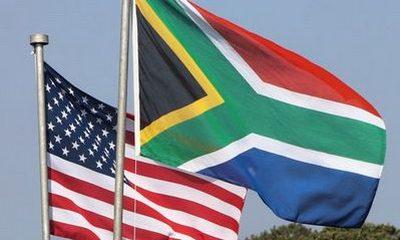Business
South Africa’s 2025 Budget Outlook Brighter, But the Hard Work Is Far From Over

South Africa’s 2025 Budget Outlook Brighter, But the Hard Work Is Far From Over
Finance Minister Enoch Godongwana heads into Wednesday’s Medium-Term Budget Policy Statement (MTBPS) with a cautiously upbeat message: South Africa’s public finances are showing small but meaningful signs of improvement.
Stronger revenue collection, slower spending growth, and a smaller-than-expected deficit have given the Treasury a little breathing room, though the country’s long-term fiscal story remains a balancing act between progress and pressure.
A Modest Fiscal Turnaround
Economists are calling it a “measured recovery,” not a miracle. Nedbank’s Isaac Matshego projects that the budget deficit will narrow to 4.4% of GDP in FY2025/26, improving from the 4.8% predicted earlier in the year. The surprise comes from better-than-expected tax revenue, which could overshoot Treasury’s estimates by R60 billion this fiscal year and up to R200 billion over the medium term.
Sars, often under fire for inefficiency, has quietly notched a few wins. The revenue service pulled in R47.1 billion in overdue taxes in just six months, helping to lift confidence in its performance. Improved domestic demand, firmer commodity prices, and operational tightening all played a role.
Economist Lara Hodes from Investec noted that higher precious metal prices have bolstered collections, a familiar silver lining for South Africa’s resource-based economy.
Spending Discipline and Wage Control
On the spending side, the Treasury seems to be keeping a tighter grip. Government expenditure growth is expected to land at 6.5% in FY2025/26, below the 7.5% forecasted earlier.
Part of this restraint comes from the three-year public sector wage deal signed in February, which caps annual increases between 4% and 6%, depending on inflation. It’s a politically sensitive but fiscally necessary move one that aims to keep the wage bill from ballooning further.
Still, debt service costs remain a stubborn problem, swallowing nearly 19% of total revenue. The good news? As inflation cools and interest rates ease, the pace of debt growth is expected to slow.
Matshego predicts South Africa’s debt-to-GDP ratio will peak at 78.1% in FY2027/28, before gradually declining if the government maintains a primary surplus of around 2% over the medium term.
Economy Crawling Forward, Not Leaping
On the ground, South Africa’s economy is showing some resilience. Improved electricity supply, a rebound in agriculture, and revived tourism are lifting activity, even as export performance lags behind.
The end of duty-free access under the US’s Agoa trade deal has hurt exports, and global demand for commodities is cooling. Still, Nedbank expects GDP growth of 1.2% in 2025, edging up to 1.6% by 2027 a slow but steady climb.
The Bigger Picture: Reform or Repeat?
While the numbers offer a glimmer of optimism, not everyone is convinced that South Africa is out of the woods.
Frederick Mitchell, chief economist at Aluma Capital, warns that the upcoming MTBPS will test whether government is serious about structural reform or whether it will fall back on short-term fixes like tax hikes.
“Public debt has ballooned past R5.8 trillion, now about 78% of GDP,” Mitchell said. “Debt service costs already exceed what the country spends on health or housing. Meanwhile, local companies are sitting on R1.8 trillion in cash reserves money that could fuel jobs and investment if business confidence were restored.”
He argues that the reliance on repeated tax hikes, including the recent VAT increase, is unsustainable. “We’ve reached a point where the only real solution is growth not more squeezing of taxpayers.”
What to Watch for in the 2025 MTBPS
Economists are expecting policy shifts, too. Treasury may introduce a narrower inflation target, moving from the current 3–6% range to 2–4%, and possibly unveil a fiscal anchor rule to cap expenditure growth relative to revenue, a long-requested move to strengthen fiscal discipline.
Matshego believes these reforms could reinforce investor confidence: “The MTBPS will likely show that the government is serious about stabilising its finances and keeping debt under control.”
A Turning Point, If South Africa Chooses It
Ultimately, Wednesday’s statement isn’t just a budget update it’s a political and economic crossroads.
Godongwana faces the tough task of balancing fiscal stability with social and economic urgency in a country where unemployment remains sky-high and service delivery continues to lag.
As Mitchell puts it:
“The path to prosperity lies not in squeezing taxpayers, but in enabling growth through reform. Rebuild infrastructure, improve governance, and make investment predictable that’s how South Africa restores hope.”
South Africa’s fiscal outlook may be brightening, but the glow will only last if the government can turn these early signs of stability into real, inclusive growth.



























